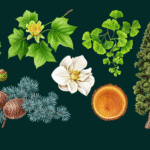Richard Sperry BA’79 MD’83 MS’94 PhD’95 could share expertise about all kinds of things. He’s a professor of anesthesiology; an adjunct in economics, political science, and family and preventive medicine; and he’s written two textbooks on neurosurgical anesthesiology. But his expertise doesn’t end in the operating room or the classroom. Sperry is an avid baker and has been a member of the Bread Bakers Guild of America for more than a decade. Last year, he even baked at the prestigious Fête du Pain bread festival in Paris.
Sperry got his start baking after returning from religious service in Austria, where he fell in love with the baked goods. “ ‘It was just bread,’ I thought. ‘How hard could it be for me to make my own?’ ” Turns out, it was difficult! But he thinks that after 20 years baking, he’s just about able to replicate some of those European loafs. And over the years, as he’s honed his craft, he’s noted a few tips to help the amateur baker have more success with an oven.
DOCTOR’S ORDERS FOR BETTER BREADS
1. No cutting corners. Read the recipe all the way through before starting. Make sure you have all the ingredients beforehand and follow all the directions.
2. Don’t be afraid of the dark! Dark crust can add layers of flavor and caramelization.
3. Baking takes time. Anything that’s done quickly isn’t likely to have good flavor unless it’s laden with butter and sugar.
4. Refresh a loaf of bread that begins to feel or taste stale by wrapping it in aluminum foil and baking for 10-15 minutes
in a 350-degree oven.
5. Keeping bread frozen extends its life. To thaw, wrap in aluminum foil and bake at 350 degrees for 40 minutes.



Do you use bread starters? If so where can I buy one for sourdough and which one do you recommend? Thanks for your article. Very interesting!
More hints! Recipes! Master’s course?
I use a sourdough starter in some of my breads. I maintain one that I purchased from King Arthur Flour company several years ago. This is a very flavorful starter that is also very durable. However, if you don’t use the starter regularly it is too much work to keep it active and healthy. Most of my breads have another type of “starter” called a preferment. In this case a certain percentage (say 20%) of the flour in the recipe is mixed with an equal weight of water and a small amount of yeast. This is allowed to ferment at room temperature for 12 hours. The preferment builds a lot of flavor. It is added to the dough during mixing – making sure to subtract the amount of flour, water and yeast from the final mix so that the totals in the dough plus preferment equals the original amount in the recipe. This technique greatly improves the flavor of the final bread.
I’d love to know more. Is there a longer article about him somewhere else?
That looks like a traditional braided challah you’re holding. Is it? I could’ve used one of those when I got married in a Jewish ceremony in SLC 35 years ago. Thanks for keeping the art of baking bread alive.